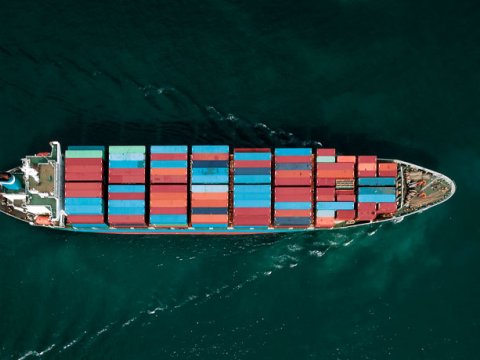Why Containers Are Integral to Digital Transformation
Digital transformation has been vital to business continuity during the last few years. When most interactions moved online during the pandemic, organizations had to quickly adapt their IT systems to accommodate new ways of working, learning, shopping and operating.
Digital transformation has been vital to business continuity during the last few years. When most interactions moved online during the pandemic, organizations had to quickly adapt their IT systems to accommodate new ways of working, learning, shopping and operating.
Many businesses had to close office locations and dramatically adjust their IT systems to support remote working. Microsoft reported seeing ‘two years’ worth of digital transformation in two months’ — taken shape through remote teamwork and learning, sales and customer support, and critical cloud infrastructure and security services. Amid coronavirus, tech began to shine, helping companies not only survive — but thrive.
The success of various transformation projects gave IT a bigger voice at the table and caused increased investment in new technology and organizational appetite for risk. Now, more and more companies are exploring emerging technologies that enable agile development and accelerate innovation. And one of the most compelling solutions in a modern digital transformation strategy is containers.
From The Untouchables to Fast & Furious
If you look at how application architecture has evolved, there are two clear milestones on that journey: the monolith architectures of old and the microservices architectures of today. I liken these milestones and their characteristics to two famous films.
- The Untouchables: Look back several decades to see how application architectures have evolved. What comes to mind immediately are the monolith applications of this era. An analogy I like to use is The Untouchables since these were complex, huge applications. Making any change was a lengthy, laborious process.
- Fast & Furious: Containers optimize digital transformation because of their microservice architecture. It's the opposite end of the spectrum to The Untouchables, and that's why the film analogy is Fast & Furious. The capabilities and everything that containerized applications and microservice architectures offer allow for faster deployment of the applications, and quicker troubleshooting of bugs found in the production environment.
The Benefits of Containers
Containers allow you to reduce the risk and cost of digital transformation while enhancing your services.
- High portability: The main advantage of containers is portability. The microservice architecture is based on this concept of containers — a lightweight unit of packaged application. Not just source code, but libraries, dependencies — everything is prepackaged to enable ease and portability.
This optimized infrastructure reduces the risk and cost of digital transformation, accelerates workload efficiencies, consolidates data centers and reduces system footprint.
- Faster and more efficient application deployment: When you break down an application into multiple microservices and containers, you reduce the effort required to write or develop applications. This usually results in reduced overhead costs, greater efficiency and faster application development. Development efforts are distributed across multiple developers, with the advantage of greater momentum or acceleration during those development phases for each of these microservices.
Faster application development allows you to deliver new features and capabilities of your services to the customer in much shorter cycles. Everything is broken down into components that can be individually enhanced and deployed without having to wait for the rest.
- Improved service availability: Containers can help you improve SLAs as well. If you run into problems in the production environment, you can quickly recycle containers or microservices, improving availability and contributing to good results in your disaster recovery strategy.
Container Challenges and Limitations
There are a few limitations to be mindful of when using containers in any digital transformation.
Although they are more space efficient than VMs, containers still take up infrastructure capacity when idle and can incur unnecessary costs. To keep these costs to the bare minimum, companies could opt for serverless systems instead.
You don't have to move to containers all at once. Instead, transition some services to containers while leaving the rest of your application untouched. You can migrate more services over time until the application is fully containerized.
There are third-party solutions that claim easy transition to containers. However, they come with additional steps and costs. You should avoid these proprietary offerings and use open-source solutions with active communities like Kubernetes, or adopt solutions from the hyperscalers. There may be a steeper learning curve, but it will save your IT teams time later.
Enhance Your Digital Transformation
Containers are the most convenient solution when you're refactoring or replatforming an application. The leading container framework, Kubernetes, is universally accepted by hyperscalers, making containers ideal for maintaining cross-cloud portability or hybrid portability (running the same applications on-premises as in the cloud).
Compared to traditional IT infrastructure management, having a containerized infrastructure is more like software engineering — IT teams use code to describe the desired result and automated systems spin it up. Containers provide a foundation for exceptional flexibility in responding to external and internal demands, allowing your company to transform in new and exciting ways.

Can IT leaders who are passionate about Cloud successfully manage the IT skills shortage?
About the Authors

Rackspace Technology Staff - Solve
The Solve team is made up of a curator team, an editorial team and various technology experts as contributors. The curator team: Srini Koushik, CTO, Rackspace Technology Jeff DeVerter, Chief Technology Evangelist, Rackspace Technology The editorial team: Gracie LePere, Program Manager Royce Stewart, Chief Designer Simon Andolina, Design Tim Mann, Design Abi Watson, Design Debbie Talley, Production Manager Chris Barlow, Editor Tim Hennessey Jr., Writer Stuart Wade, Writer Karen Taylor, Writer Meagan Fleming, Social Media Specialist Daniel Gibson, Project Manager
Read more about Rackspace Technology Staff - SolveRelated Topics



